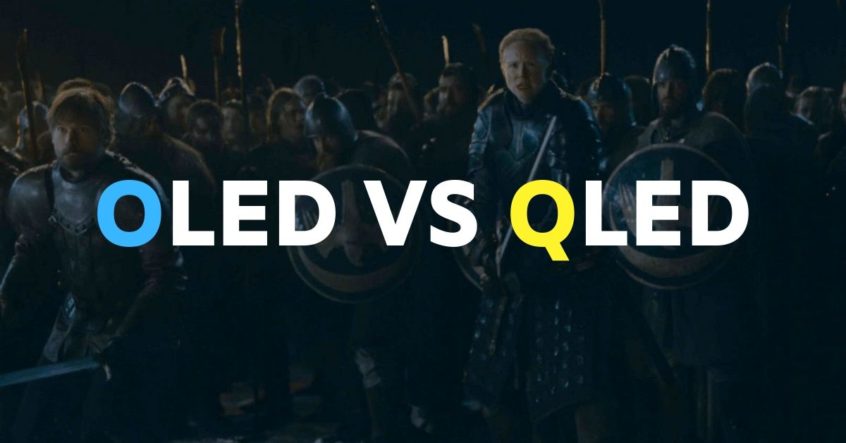
OLED vs. QLED
Originally posted on https://www.thebigscreenstore.com/oled-vs-qled/
Originally posted on YouTube by The Big Screen Store
Are you shopping for a Sony or LG OLED TV? Are you familiar with the benefits of QLED TVs versus OLED TVs? In this post, we’ll be discussing the differences of these two competing technologies.
Black Levels
OLED has long been favored for its deep black levels. OLED is a self-emissive technology, meaning each pixel can turn on and off on its own. When the pixel turns off, you get true black. QLED TVs on the other hand require a separate light source, which traditionally came from the edges of the TV and resulted in light coming through in areas that were supposed to be black. For 2019, Samsung brought full array backlighting to much more entry priced models. With full array backlighting, there are a bunch of LED lights behind the screen that can be turned on and off to work with the screen. In areas that are supposed to be black, the LEDs behind that section of the screen can now be turned off, resulting in deep blacks with no bleeding of light from bright to dark areas. Every Samsung Q70 seriesand above (Q80, Q90, Q900) QLED TV offers full array backlighting. Add in the triple black screen technology that you get in the Q80 series and above for black levels that rival OLED, even in bright rooms.
Brightness
QLED wins hands-down in this category. QLED TVs can produce approximately 4 times the brightness of the best OLED TVs. If you’re looking for a TV that will stand up to even the brightest viewing environments, QLED is the clear winner here. If you’re a Game of Thrones fan, you may remember all of the talk after one of the final episodes where most complained that it was difficult to see what was going on because the scenes were so dark. If you watched on a QLED TV, you were one of the few people that weren’t complaining! This is also a big deal for gamers, as many of today’s games are very dark.
Burn-in
OLED is an organic technology, just like plasma TVs were and even the old tube/CRT TVs. With any organic technology, a stationary image such as a scoreboard, ticker, or channel logo will burn in if left on the screen too long. If you visit your local box store, you’re likely to find something burned into the screen of their OLED TVs on display.
QLED TVs cannot burn. Samsung actually offers a no burn-in guarantee for the life of the television!
If you’re a gamer, watch the news, or watch sports a lot, beware of burn-in on OLED TVs!
Longevity
Rtings.com did a great article on this topic.
The pictures showing the degradation in OLED TVs, even in just a short period of time, speak for themselves. OLED is a great technology for cell phones and other devices that get replaced every few years. If you’re like most people, you keep your TV for 8 to 12 years before upgrading. OLED TVs lose brightness and their colors shift over time. QLED TVs do not.
Screen Size
The biggest strength of QLED TVs is the large 82”, 85”, and even 98” screen sizes that are available, where OLED TVs top out around 75” and are typically extremely expensive in that size. You can get an 82” Samsung QLED TV starting at just around $2500!
Conclusion
If you truly want the best blacks you can possibly get, OLED is still a slight winner. If you are strictly watching movies in a dark environment, OLED may be your choice. For everyone else, who watches all types of content in a living room environment with varying levels of brightness, have kids (or are a big kid) with game systems setup, and want a large screen TV that won’t break the bank, QLED is the clear winner, especially with full array back lighting technology available in even some of the more entry level Samsung QLED TVs.
